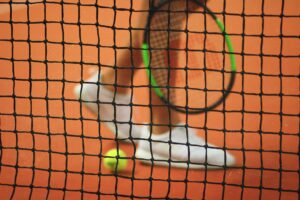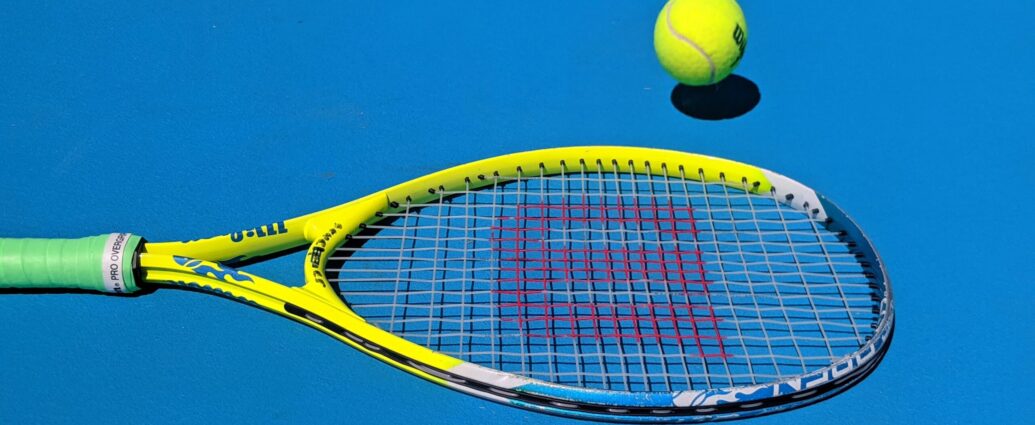Ria Walls
The long-awaited decision to allow coloured shorts underneath the all-white Wimbledon uniform has been welcomed wholeheartedly by open, racket-clad arms. But why has it taken until 2023 to prioritise female health and period anxiety over aesthetics?
Earlier this year, the Irish women’s rugby team announced that they had made the move away from white shorts, replacing the bottom half of their kit with navy instead. Speaking to the Irish Sun, players expressed their gratitude at the long-awaited decision and discussed how moving away from white alleviated period concerns.
Uniform Changes
The decision from the IRFU came after England’s Lionesses announced their plan to ditch the white shorts for the upcoming 2023 World Cup.
Following this, teams across the UK and Ireland followed suit. From local clubs to national teams, hundreds of female players breathed a sigh of relief as their light-coloured shorts and skorts were replaced by darker ones.
“Wimbledon has announced that female players will now be able to wear coloured shorts underneath their all-white uniform.”
And now, for the first time in the entire history of the tournament, Wimbledon has announced that female players will now be able to wear coloured shorts underneath their all-white uniform.
The updated rule book on clothing and equipment now reads: “Competitors must be dressed in suitable tennis attire that is almost entirely white and this applies from the point at which the player enters the court surround.

“Exception[s] provided for female players who are allowed to wear solid, mid/dark-coloured undershorts provided they are no longer than their shorts or skirt.”
A Welcomed Decision
The strict all-white dress code has been in place at Wimbledon since 1877. The new decision was voted in unanimously by the All England Club following the ‘Address The Dress Code’ campaign.
“The movement away from white is not just welcomed, but necessary. “
The 2023 competition is set to see an array of colourful shorts poking out underneath the white skirts. This seemingly small decision has had a massive impact on players who may possibly be on their periods while competing.
With 128 female players at this year’s competition, it is a fact that some of these athletes will be on their period for at least one of the days of Wimbledon. Therefore, the movement away from white is not just welcomed, but necessary.
Players’ Period Concerns
While menstruating, athletes can face a mirage of concerns. While running about their performance can be negatively affected, they could experience debilitating cramps, and they could leak blood over their uniform.
On top of this, every competitor will experience different severities of periods. Some may live in fear of an irregular cycle coming at the worst possible time. Others may be concerned about their pad slipping due to the movements on the court.

Speaking to Sky News about the recent decision, British tennis player Heather Watson wholeheartedly welcomed the movement and admitted the stress arose when she had to put on the white skort.
“I was on my period last year at Wimbledon and it was very stressful.”
She said to Sky News: “Last year I went on the pill to stop myself bleeding because I knew I had to wear white undershorts and I didn’t want any embarrassment.
“We’re running around sweating, doing the splits on the court. This year I knew my period was going to be during Wimbledon again, so I’m very happy I won’t have to do the same thing as last year.”
US tennis star Coco Gauff told Sky News: “I was on my period last year at Wimbledon and it was very stressful.”
“You have period underwear to help you but it’s still in the back of your mind. Sometimes when you go to the bathroom, you’re supposed to use the bathroom but sometimes I would go to check nothing was showing.
“I think it will remove a lot of stress for me and it’s very nice it’s being talked about.”
#SayPeriod
Other athletes have done monumental work in de-stigmatising the conversations surrounding periods. The #SayPeriod campaign has also contributed to the movement.
Despite this decision proving to be good and beneficial for many players, the fact that it has taken until 2023 for such a movement is disappointing for athletes worldwide.
“It shouldn’t have to be the players’ responsibility to take control of their uniforms.”
A pioneer in the anti-white shorts movement is French tennis player Tatiana Golovin. In 2007, Golovin wore red shorts under her white Wimbledon kit. Although she wore these eye-catching bottoms for reasons unrelated to periods, questions still arose on the matter.
Was this a violation of the strict dress code? Would it be more concerning to see a pair of red shorts or a spot of red blood?
It takes a lot to speak up about periods, as it’s often deemed taboo. But it shouldn’t have to be the players’ responsibility to take control of their uniforms. And it shouldn’t have taken until 2023 for officials at every level of the sport to realise that a tight, all-white uniform may cause distress for numerous players who menstruate.
The ball’s in who’s court?
What is the solution? Should coaches and those in charge of the kits be more aware of the obvious concerns that go hand-in-hand with light-coloured, short, tight uniforms? Or is the problem to do with discussions about periods being shoved into the corner and not being prioritised?
Although it may seem mundane, the change in the colour of shorts is a significant decision that has started a chain reaction across the sporting world.
![]()
![]()
![]()

Female athletes across the UK, Ireland and beyond welcome the movement wholeheartedly. This is just the beginning of a wider movement in female sport, especially when addressing matters to do with period concerns.
When we consider the minuscule shorts worn in volleyball or the tiny running shorts female athletes wear, it becomes clear these concerns must exist for hundreds of girls across the nation, even if they are not openly discussed.
With a shocking 64% of school-age girls dropping out of sport by their mid-teens because of period pain and shame, these movements and conversations are just the start of addressing these concerns. It is just the beginning of normalising discussions on menstruation. Menstruation shouldn’t be taboo – period.
READ NEXT:
-
FORMULA 1: 2023 AUSTRIAN GRAND PRIX REVIEW
-
SWIM ENGLAND BANS WEIGHING OF CHILD ATHLETES
-
ALPINE GET €200 MILLION BACKING FROM INVESTORS INCLUDING RYAN REYNOLDS
Featured image courtesy of Josephine Gasser on Unsplash. No changes were made to this image. Image license found here.

